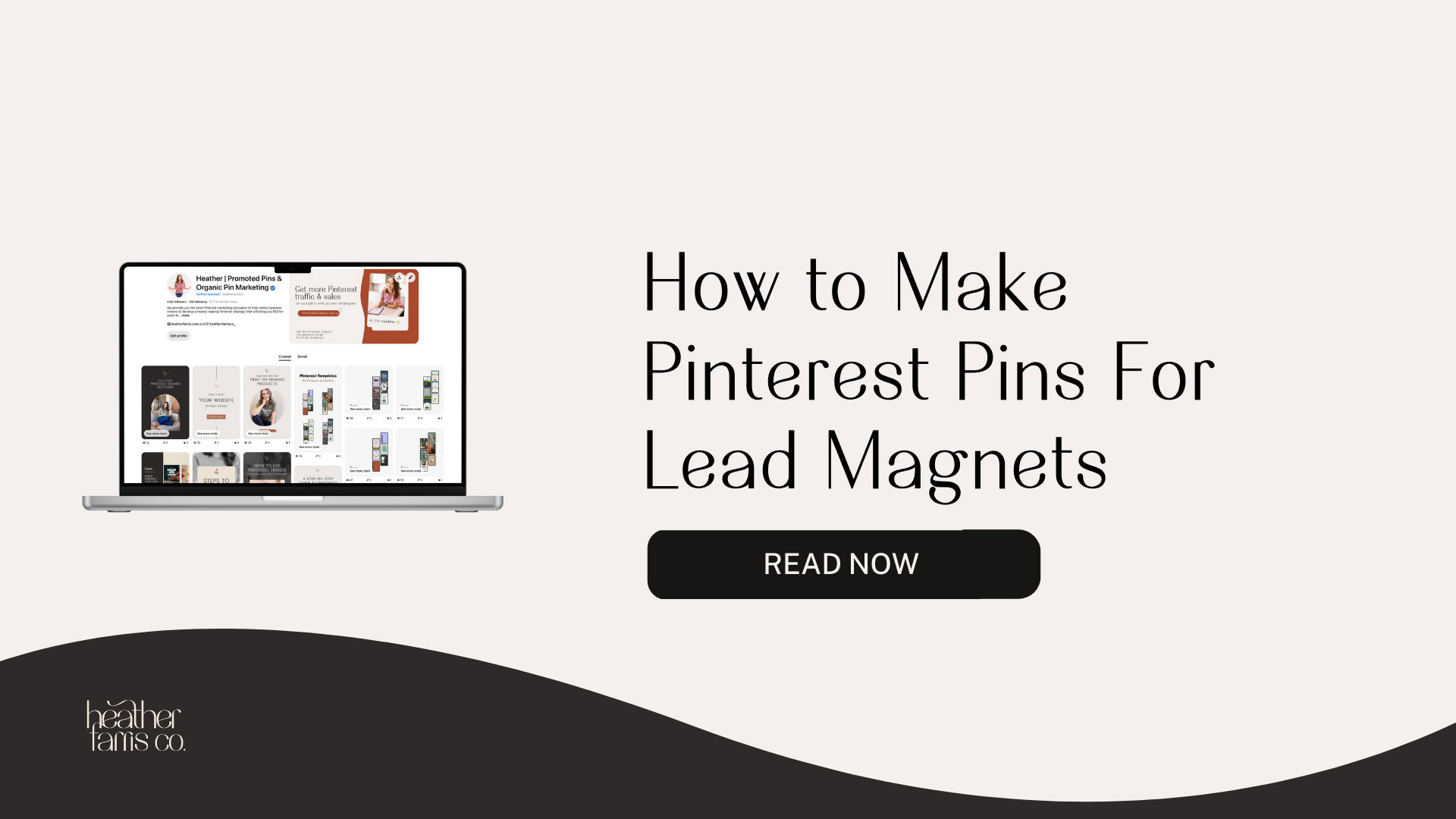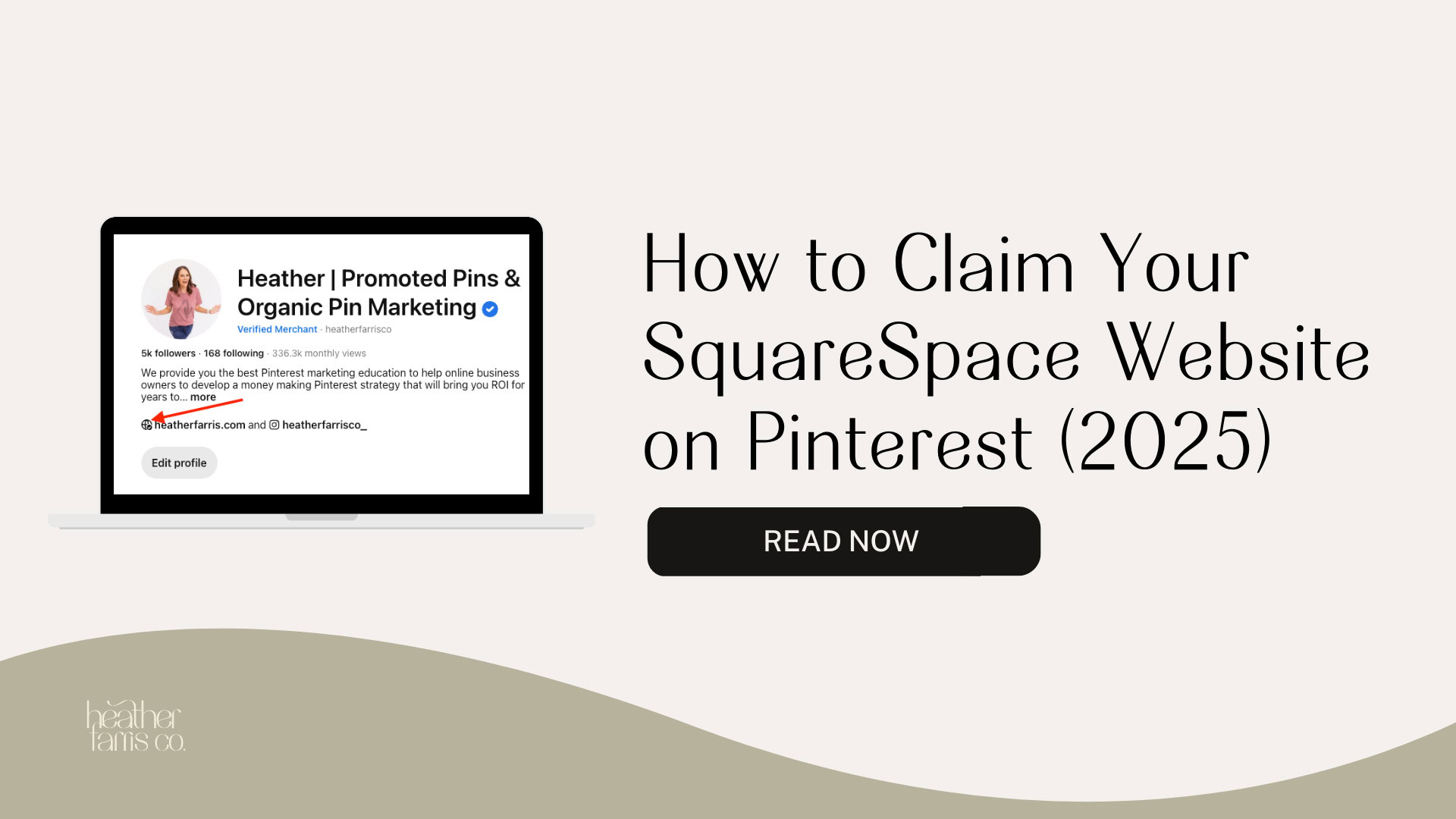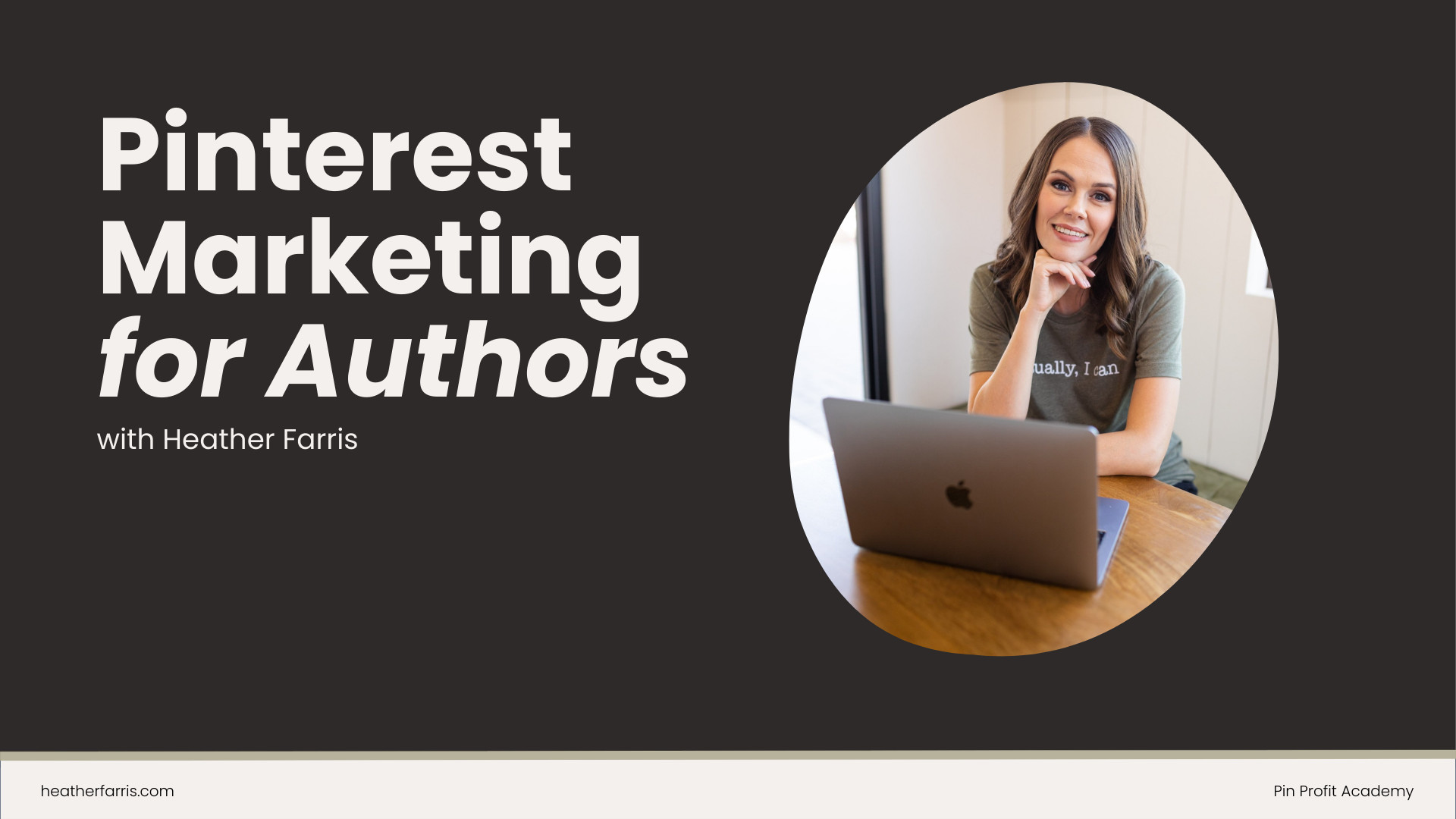Heather is a seasoned
Pinterest marketing expert & educator using the platform since you could reach the bottom of the feed - 2010.
About Heather Farris >
How to sell digital products in your business
June 10, 2020
Are you wondering if you should start selling digital products in your business? Small products are taking the world by storm and if you’re wondering just how you can use them to make more money in your business then you’re in the right place.
Small products are a great way to build your traffic and grow your sales. Between promoting organically and through paid ads you can find targeted audiences to get in front of that are looking for your products.
I don’t know about you but I certainly prefer to rely on keywords to put my content in front of people rather than posting on social media and hoping people see it. That’s why I primarily use Pinterest and Google SEO to get my products found online.
This post contains affiliate links. I will make a small commission if you click a link and make a purchase. Read more here.
How to Sell Digital Products on Pinterest
I’ve been selling digital products on Pinterest since my first year in blogging. I saw early on the benefits of digital products and how the impacted my profit margins in my business.
Yet digital products can range from music, ebooks, guides, videos, courses, software and more are driving a large part of our economy.
Online learning is expected to grow to 325 million by 2025. And to put the cherry on top, online courses made 46 billion in 2017 and that has continued to grow.1
The benefits of selling digital products
Digital products hold no inventory, they don’t need to be made over and over again and oftentimes they cost less to make.
High profit margins are a great way to grow your revenue year over year and take more money home.
Automations make selling digital products easier for the creator.
Flexibility in marketing and selling making it easy for someone to customize their product to their audience. Every audience is different and being flexible makes it easy to serve a different type of audience.
What are the disadvantages of selling digital products?
Digital products come with their own little suitcase of problems but what doesn’t? With selling digital products you face the risk of people stealing your products.
People are ruthless and if they see someone being extremely successful they will copy the idea or if they have no ethics they may even steal the product itself.
You’re competing with free products. So many people are used to getting information for free that they don’t understand why they should buy something “digital” to solve their problems.
But don’t let these things distract you from your goal. If you have the right methods, you train your audience and you’re determined you can succeed with digital products.
What are the Best Tools for Selling Digital Products
Tools in this area of selling digital products is key. You are going to need to protect your product so people can’t come in and get it for free and you’re going to need a shopping cart.
LeadPages – I used LeadPages for creating my sales pages for my small digital products. This is how I sell digital products easier and it’s the beginning of my automation.
Elementor – I now use Elementor for building my funnel pages. It’s inexpensive and works very much like LeadPages.
AccessAlly – If you want a course delivery system that is more robust that you can design and control every part of then AccessAlly is a great option. I wanted a way to control pixel tracking throughout the process and deliver custom products depending on how the buyer went through the funnel.
ConvertKit – I have used ConvertKit to deliver my digital products and it syncs right up with AccessAlly. I have used this service since before I was making money on my website.
Elementor – This tool can be used for free or you can use their paid version. This is like LeadPages but it’s a plugin on your wordpress site to build pages.
Thinkific – Thinkific is a course delivery platform I have used in the past to sell my products. I stopped using it because it was costing me more than what I was making in the beginning so I switched. If you aren’t interested building your own course platform then this is my #1 suggestion for hosting products. You don’t need to create a traditional course to use this platform either.
SendOwl – SendOwl is an inexpensive platform for selling and delivering your digital products. It has an embedded protected delivery system, affiliate program and you can track pixels within it.
ThriveCart – ThriveCart is my new shopping cart platform. They make it easy to setup, sell and track conversions of your memberships, courses, digital products, even client invoices if you wanted to.
WooCommerce – This is a digital shop platform you can build into your WordPress site. This is your storefront and with WooCommerce comes apps to integrate and sell your products. I find WooCommerce to be plugin heavy which is why I don’t use it anymore.
Shopify – This is an inexpensive storefront tool that you can use to sell your products. It comes with a shopping cart and integrates with your email service provider.
What kinds of digital products can I sell?
When it comes to selling digital products it’s interesting to see what people come up with. There are so many different ways to approach this depending on what industry you are in.
Sell educational products in the form of ebooks or courses
No matter the industry there are people out there looking to learn from you. Ebooks and courses are a great way to teach what you know and get paid for it. An online course is great for learning where you can take someone really deep on a specific subject.
You can create text based or video based online courses and depending on your course software you can even create tests for your students to take.
I sell digital courses in my business where I teach other online business owners how to use Pinterest in their business inside Pin Profit Academy.
When I’m helping clients or creating a digital course of my own I always do the research to find out just how much free content I’m facing off with. Oftentimes you can take that free content and completely blow it out of the water if you’re really versed on a topic.
Selling digital products like online courses and ebooks can provide you with a way to really transform your student and help them with the issue at hand.
Sell digital templates
Digital templates have taken the world by storm. One of my own digital products are my Pinterest Templates for Canva.
These are a great way to sell a digital product that you design once and make a profit from. You can sell any sort of template like social media templates, ebook templates, media kits, resumes, workbooks and more.
Sell digital assets licences like software, music, photos or videos
There is a plethora of platforms and individuals selling assets like software, music, photos and videos online. If you are a creative and want to get your product out into the world a license based digital product could be the ticket.
There are a ton of other things you can sell like this as well but these are just the beginning of that rabbit hole.
Sell a membership
Memberships are different way to monetize your digital products and earn a recurring income from. If you have digital courses or products this could be one way you go deeper on various subjects and provide even more value to your audience. I added Pin Profit Academy to my own product suite.
Sell your services
This is the #1 way here at Heather Farris & Co. we make money online. We provide a digital service in exchange for money and our clients love us for helping them make more money and grow their businesses using Pinterest.
Sell your art
A lot of artists and crafters are selling their art online now and doing really well at it. It’s no longer necessary to have your art in a gallery to get it in front of your ideal audience.
How to find digital products to sell
This is the first place I help my clients when it comes to selling small digital products on Pinterest. We always start with their data first and for good reason.
If your audience is coming to you for something already and they know you for that thing then create a small product around it.
Afterall, blogging and business isn’t about you… it’s about your audience.
If you’re looking for a way to spark those ideas though then you can use these methods…
Remember this as you go through the process… Brainstorm, Research, Validation. You don’t want to go about creating a product or service people don’t actually want.
- Go to Google Analytics and look for your top trafficked posts and pages
- Research in forums for pain points of your audience
- Ask your audience what they want but don’t just ask them you will need to brainstorm a few ideas first then ask them if that product would help them. This is what I learned in Ask Method.
- Do you offer a service that people readily buy but often ask if you teach? This is relevant for me with Pinterest marketing because not everyone in my audience can afford 1:1 services.
- What are you customers or clients asking you on a regular basis?
- What do you already teach on but your competitors are doing a better job at? How can you go deeper on it or do it better?
- What are you already making and giving to your clients as part of your 1:1 work that you could sell? Search your Google Drive here!
I always start with my current traffic and audience pain first then build out from there but if you don’t have a lot of traffic yet then utilize that audience.
How do you make money selling digital products?
Now we get to the fun part… making money. Raise your hand if you want to make money selling digital products? ?♀️
Making money from your digital products can come in many forms but my favorite way always starts with content.
Yes, more content… but the top of the funnel is always free and it has to start somewhere.
In my business I have created funnels to give people a taste then sell the products on the backend.
I also do a straight to sales page as well. It’s not always through free content.
Free to tripwire method
This method is where I create a paid product and take part of it and give it away for free then offer a tripwire for a small price on the thank you page.
I do this with nearly all my small products actually. If you’d like to see this in action you can visit any one of these free pages.
On the backend of these tripwire sales I offer an upsell on the final page. This is where the money is made. Usually tripwires don’t make a ton of profit especially if you’re running ads. They are designed to cover the ad spend then your upsells and order bumps make you the profit.
Straight to sales page
All of my tripwires are sold separately at full price where I promote straight to sales page. I write content outlining the benefits of that product and my call to action is to buy the product.
You can find my entire suite of products in my shop.
Once I get someone into my world whether they are coming in free or paid I upsell them in my emails to 1:1 work or high priced products like my courses.
Funnels are effective and if you are in need of getting your own funnels in place and want someone to help you in a hands on way then check out our VIP Day and book your spot.
How do you promote digital products?
My favorite way whether it’s a free entry point or a straight to sales page is through Pinterest. This is the first place I promote everything.
I start with creating the pages they will land on or the blog posts that will sell them on the products then I find my keywords, create pins and automate with Tailwind.
If you need a Pinterest marketing strategy head over to read How to Create a Pinterest Marketing Strategy.
I always start with Pinterest because I know people are looking for a product or solution. I position my creatives, landing pages and blog content to touch on the pain then offer them the product as the solution.
Facebook groups – This is the first place I see people selling their products and while I do occasionally post in groups this isn’t my favorite method. I do however use my own Facebook Group to sell.
Instagram stories – I love this method because I can talk directly with my audience and to their pain then use my product to show them how to solve the problem. I can share in real time the wins my other students or clients are having with my methods. Nothing speaks more than a testimonial.
Email newsletter – I sell in my newsletters every week and if you are on my newsletter and you haven’t noticed it’s probably the way I go about it. I make talking about my products a very natural conversation. As a result people are intrigued then click and buy.
Blog posts – Of course I sell in my blog content! This is my newspaper, my magazine… the way I show my readers incredible value then ask them to buy.
YouTube videos – I have created content for YouTube and when I do this consistently I notice an uptick in sales and email subscribers.
Pin It For Later
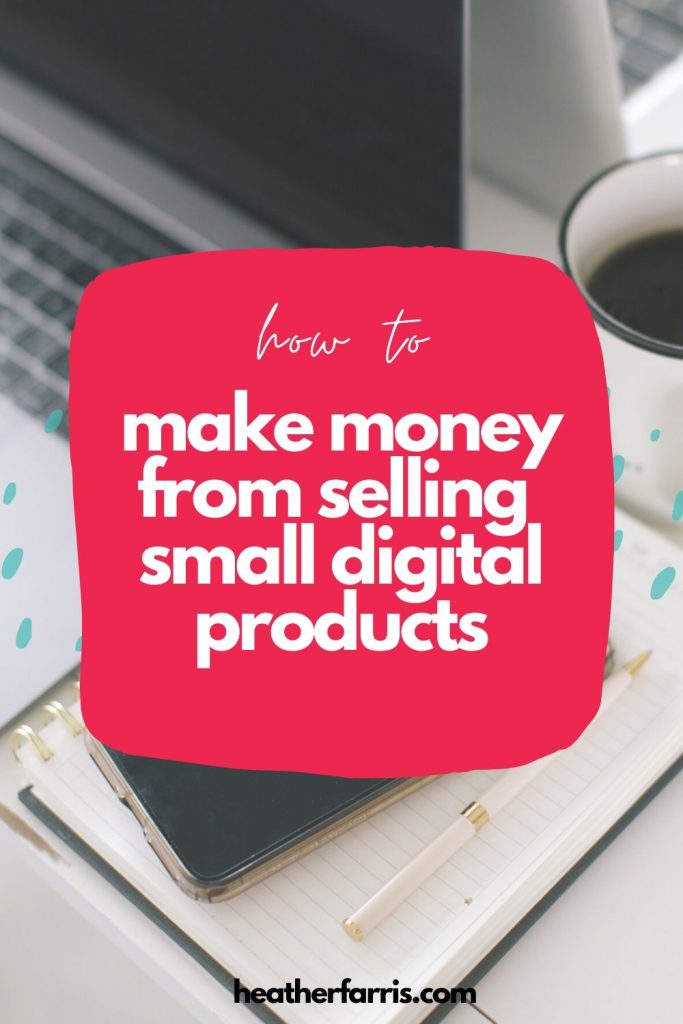
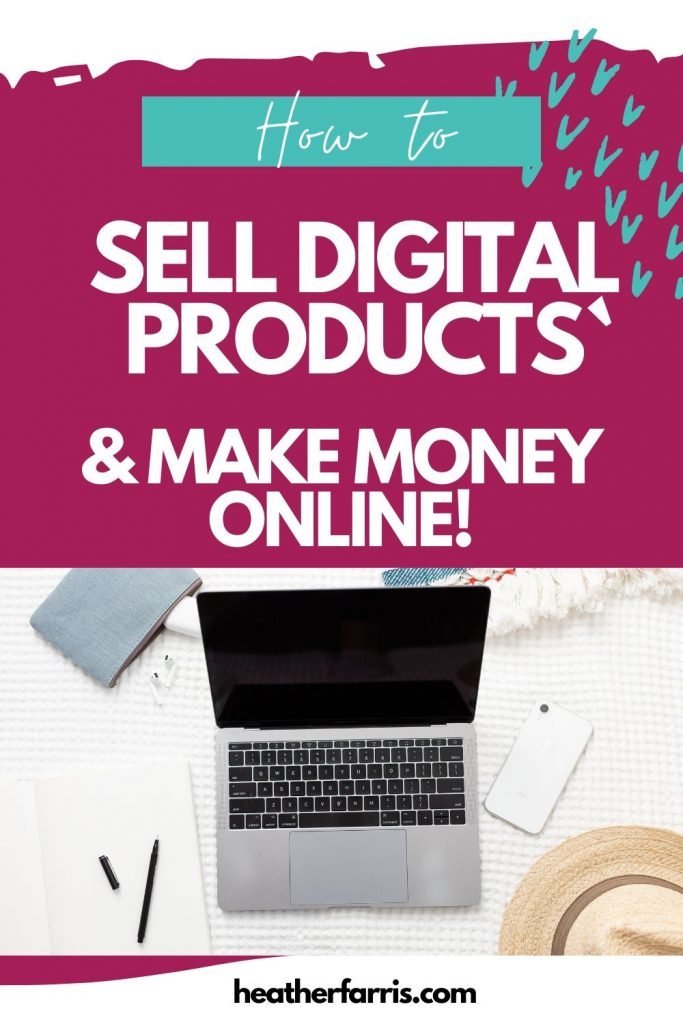
Heather Farris went to school for accounting and worked for years in banking and finance. After finding all of that entirely too boring she started her first blog in her basement in August of 2016. She has started 3 blogs in the marketing, motherhood and travel niches and used Pinterest to grow them all. She quickly became the go-to Pinterest strategist in her peer circles and has been implementing strategies, driving traffic and sales through organic and paid tactics for her clients. On this blog and her YouTube channel, as a renowned Pinterest marketing expert, she educates the public about clear and transparent marketing strategies to help them to grow on Pinterest and in other places online as a renowned Pinterest marketing expert.


